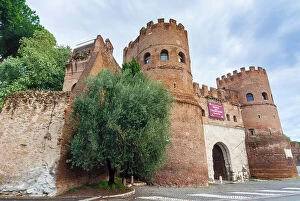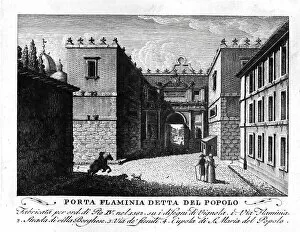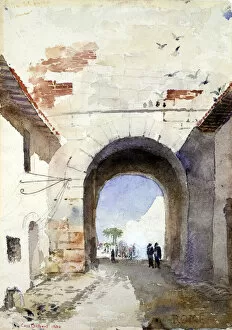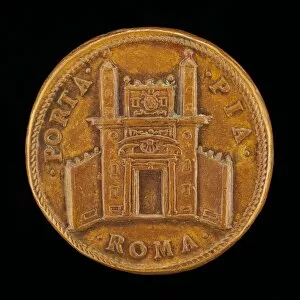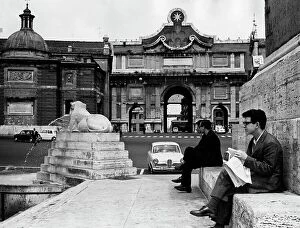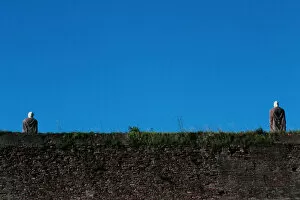Aurelian Walls Collection
The Aurelian Walls, a magnificent testament to ancient Roman engineering, stand tall and proud in Rome, Italy
All Professionally Made to Order for Quick Shipping
The Aurelian Walls, a magnificent testament to ancient Roman engineering, stand tall and proud in Rome, Italy. These imposing fortifications have witnessed centuries of history and continue to captivate visitors with their grandeur. One notable gateway within the Aurelian Walls is Porta Flaminia, also known as Del Popolo. This gate has served as an entrance into the city since ancient times and remains a symbol of Rome's rich heritage. A digitally restored reproduction from Giovanni Battista's Vedute principali e piu interessanti di Roma allows us to marvel at its architectural splendor. Another fascinating structure built into the Aurelian Wall is what we now know as The Hippodrome of Aurelius or Castrense Amphitheatre. Although its original purpose remains unknown, this 17th-century artwork provides a glimpse into historical Rome and showcases how these walls were integrated into everyday life. In 1963, an enchanting view of Rome over Porta del Popolo was captured in a lithograph by J. Arnout. The bustling streets and iconic obelisk create a picturesque scene that transports us back in time. The Arrival of Cardinal Francesco Gonzaga depicted in marble quarry workings reminds us that even amidst the grandeur of the walls, life continued to unfold within their protective embrace. History took another turn on September 20th, 1870 when Porta Pia became witness to one of Italy's defining moments - the breaching of these formidable walls during Italian unification efforts. This event marked a significant turning point for both Rome and Italy as they moved towards unity. Porta San Paulo stands proudly today; an enduring reminder of Cass Gilbert's architectural brilliance from 1880. Its intricate design showcases the attention to detail that went into constructing these monumental gates. Via Porta Pinciana takes us on a journey through Edward Lear's eyes with his artistic depiction capturing not only the beauty but also the essence of Rome's vibrant streets.



